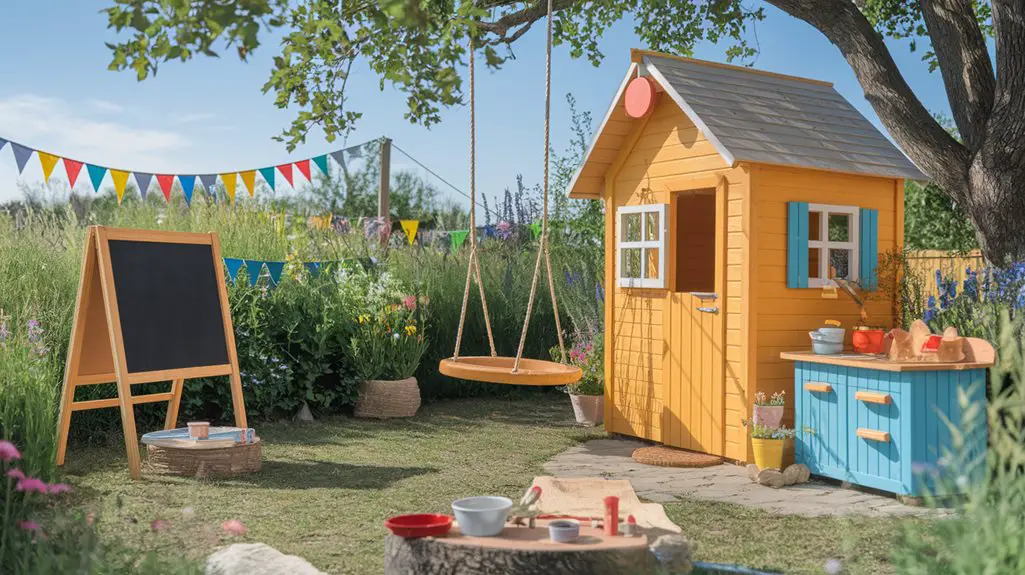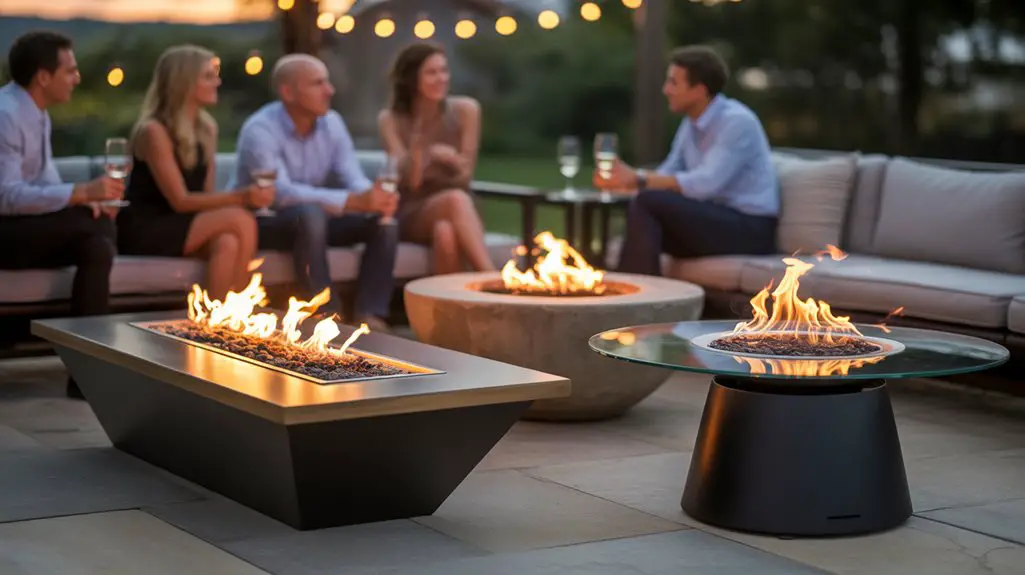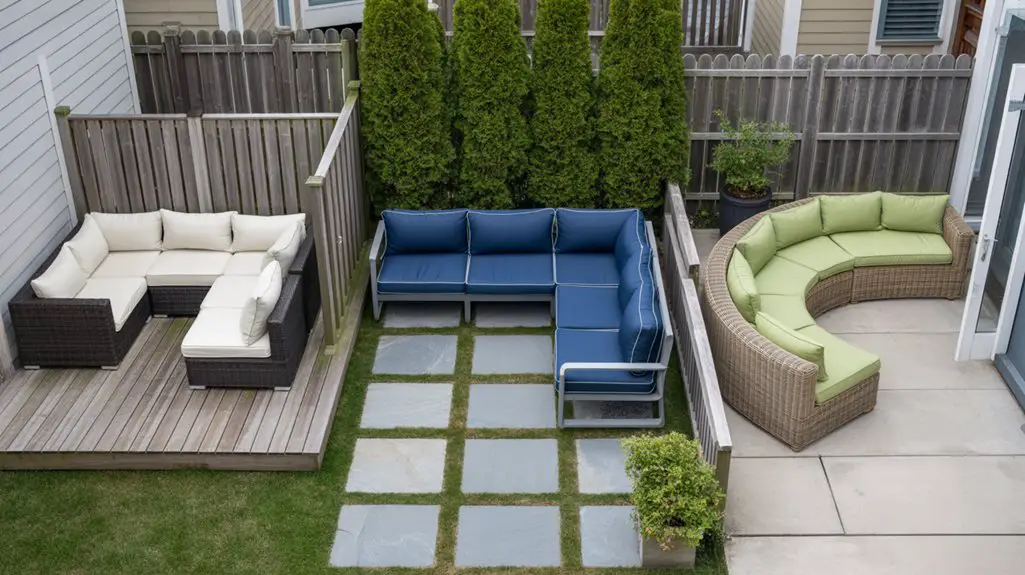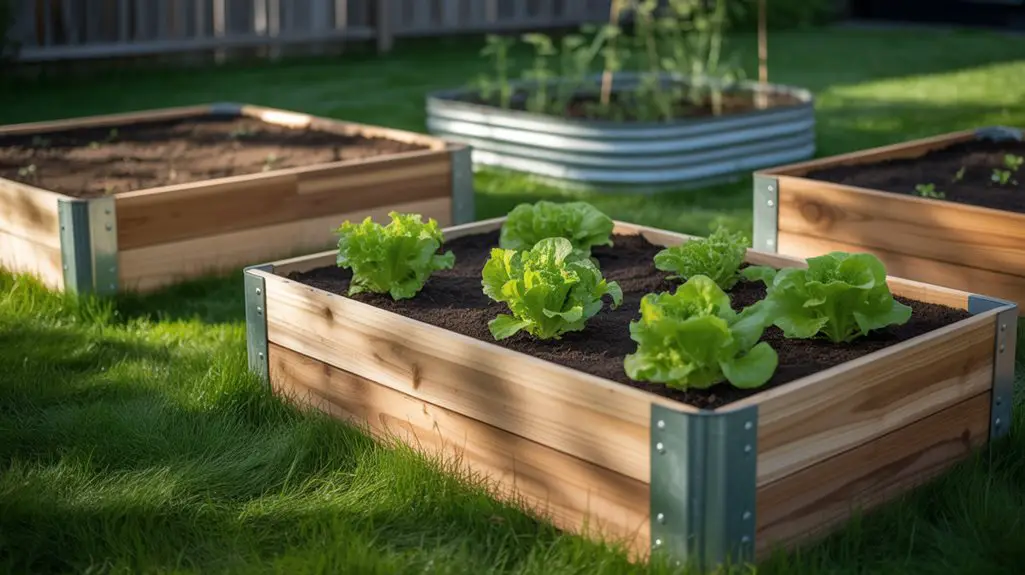Just as I began planning my son’s play area, his dinosaur obsession reached new heights. You’ll find that creating a DIY play space doesn’t require professional skills or an enormous budget—just some creativity and planning. Whether you have a dedicated room, backyard corner, or simply want to transform part of the living room, these seven simple tips will help you design a magical space where your children can explore, learn, and grow through play.
Choose a Theme That Sparks Imagination
When creating a play area for your child, selecting a theme is your first exciting step toward building a space that truly ignites their imagination.
Consider your child’s current interests—whether they’re fascinated by dinosaurs, enchanted by fairy tales, or obsessed with outer space.
You don’t need to limit yourself to commercial themes. A “discovery zone” with nature elements or a “creative studio” with art supplies can be just as engaging.
Incorporate flexible elements that can transform as your child’s interests evolve.
Use simple decorations like wall decals, themed storage bins, or fabric canopies to establish the atmosphere without overwhelming the space. Additionally, remember that transforming backyard spaces can create endless opportunities for outdoor play and exploration.
Select the Right Flooring for Safety and Comfort

Flooring in your child’s play area serves as the foundation for both safety and enjoyment during active play sessions.
Opt for foam interlocking tiles that absorb impact and come in vibrant colors to enhance your chosen theme. These tiles are easy to clean and replace if damaged.
For babies and toddlers, consider extra-thick padding underneath carpeting or play mats.
If you’re working with existing hard floors, layered area rugs with non-slip backing provide warmth and cushioning.
Natural materials like cork offer a sustainable option that’s gentle on little knees while still being durable. Additionally, low-maintenance pet-friendly yard solutions can be integrated to ensure safety for both kids and pets.
Whatever you choose, make certain it’s free of harmful chemicals and easy to maintain.
Create Dedicated Zones for Different Activities

With the perfect flooring in place, your child’s play area can now become a wonderland of purpose-built spaces.
Consider dividing the room into clear activity zones to support different types of play and learning.
Create a quiet corner with pillows and bookshelves where your little one can read or relax.
Designate a creative zone with an easel, art supplies, and a small table for crafts.
Add a building station with blocks, construction toys, and a flat surface for engineering projects.
Don’t forget an active play zone where movement is encouraged—perhaps with soft climbing equipment or a tunnel.
For pretend play, set up a simple kitchen area or dress-up station.
Keep zones visually distinct using shelving, rugs, or even colored tape on the floor as boundaries.
Incorporating exciting backyard games can also enhance physical activity and engagement during outdoor playtime.
Build Simple DIY Climbing Structures
Kids naturally love to climb, jump, and swing, which makes DIY climbing structures an exciting addition to any play area. You don’t need elaborate setups to create engaging climbing opportunities for your little ones.
Consider building a simple A-frame ladder with sturdy 2x4s, sanded smooth and secured with bolts. For smaller children, create a miniature rock wall by attaching colorful climbing holds to a plywood board at a gentle angle.
A balance beam made from a 4×4 post mounted close to the ground offers both climbing and balancing practice. Additionally, incorporating creative play area ideas can enhance the overall experience and provide more variety.
Always prioritize safety by ensuring structures are stable, installing appropriate fall protection like rubber mulch, and rounding off sharp edges.
Keep climbing heights appropriate for your child’s age and supervise play, especially with younger adventurers.
Incorporate Nature With Child-Friendly Gardening Spaces
Connecting children with the natural world through gardening creates magical learning opportunities right in your own backyard. Designate a small plot where kids can dig, plant, and watch things grow.
Choose fast-growing plants like sunflowers, radishes, and marigolds to maintain their interest and provide quick rewards.
Create child-sized gardening tools by painting and personalizing inexpensive trowels and watering cans. Add stepping stones between planting areas so little feet can navigate without disturbing growing plants.
Consider incorporating sensory elements like fragrant herbs they can touch and smell.
Label plants with colorful markers featuring both pictures and words to encourage literacy.
The gardening area doesn’t need to be elaborate—even a collection of containers on a patio can become an enchanting space where children develop responsibility while discovering nature’s wonders. Additionally, consider edible landscaping ideas that can make your garden both beautiful and productive.
Add Weather Protection for Year-Round Play
Don’t let unpredictable weather rob your children of outdoor play time when you incorporate smart weather protection into your play area design.
Install a waterproof canopy or pergola with retractable shade cloth that blocks harmful UV rays while allowing airflow during hot days.
For rainy seasons, consider adding a small covered pavilion with open sides that keeps the ground dry while children play.
Weather-resistant storage boxes keep toys clean and organized through all seasons.
In colder climates, windbreaks made from strategic fencing or evergreen plantings create sheltered microclimates.
A simple outdoor heater can extend evening play during fall months, while misting systems cool active kids during summer heat.
Remember to angle structures to block prevailing winds and harsh afternoon sun, maximizing comfort throughout the year. Additionally, ensure your backyard features pet-friendly elements to create a safe space for all family members, including furry friends.
Design Storage Solutions That Keep Toys Organized
When toys scatter across the yard, outdoor play areas quickly transform from fun zones to frustrating messes. Implementing smart storage solutions keeps the space tidy while teaching children responsibility.
Consider weather-resistant bins with lids that little hands can manage independently. Color-code containers based on toy types—blue for sports equipment, red for sand toys, and green for nature exploration tools. Designing the Perfect Backyard Play Area for Kids can provide additional inspiration for your storage solutions.
Wall-mounted crates or repurposed pallets make excellent vertical storage that saves ground space. Incorporate child-height shelving under covered areas where items need extra protection.
Add picture labels to help pre-readers identify where things belong. You’ll find children more willing to clean up when the system makes sense to them.
A rotating toy system keeps the play area fresh—store some toys away and swap them monthly to renew excitement without adding clutter.
Conclusion
Your DIY play area is now a magical kingdom where your child’s imagination can run wild! Watch their eyes light up like Edison’s first bulb when they explore their new space. Remember, it’s not just about creating a play area—it’s about building memories. As you enjoy these precious childhood moments together, you’re nurturing their creativity and joy in a special place that’s all their own.




